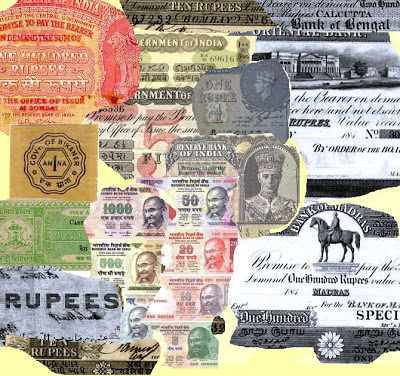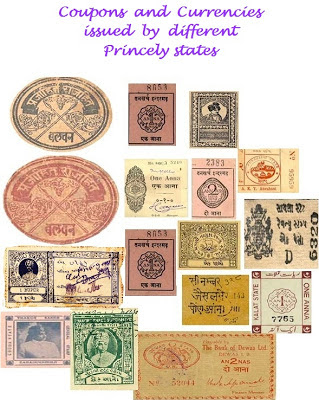
Origin and growth of Bank Notes and Currencies – 9
Origin and growth of
Bank Notes and Currencies – 9
(Written by N.R. Jayaraman)

As I stated earlier India under British rule also witnessed several of the Indian territories ruled by Princes who chose to issue Currencies, Coins and Coupons of their own to met internal need. One such Province was Hyderabad now in Andhra Pradesh. Hyderabad was the largest Indian Princely State, spread over the Deccan plains and ruled by Nizam of Hyderabad. Though the British Govt did not wish the Princely state of Hyderabad to issue coins or currencies, they had no option but to remain silent spectators in respect of Hyderabad due to the enormous contribution Hyderabad of Nijam made from his territory for the war efforts of Britishers.
The Hyderabad Currencies were issued in denominations ranging from One rupee note to Rs 1000/- denomination notes. Those Currencies remained valid until the territory merged into Union of India. The issues were regulated through the Khazana-i-Amira which means Royal treasury.
The Currency designs were simple yet ornamental with some portions carrying decorative patterns. The value of the Currency in numeral is not printed prominently though they have been printed in more number of languages on the side panels. Most of the Currencies has only four languages in the language panel even though the numerals were in five languages. Even the English language has not been given prominence. In short the general appearance of the Currencies truly reflected Islamic faith.
One of the Currencies can be seen carrying the Printer’s imprint ‘Water low & Sons Limited, London’. When the Currencies were issued there was no security press in Hyderabad. Still One rupee was reportedly printed in the Prison press in Hyderabad itself, and others were printed in London and brought over to Hyderabad. One of the consignments of the Currencies printed in London and brought to Indian port by a Ship sunk into the deep sea midway and when retrieved became unusable and were cancelled. However with the setting up of the Security Press at Nasik the printing of their Currencies were printed there.


………to be continued













Recent Comments